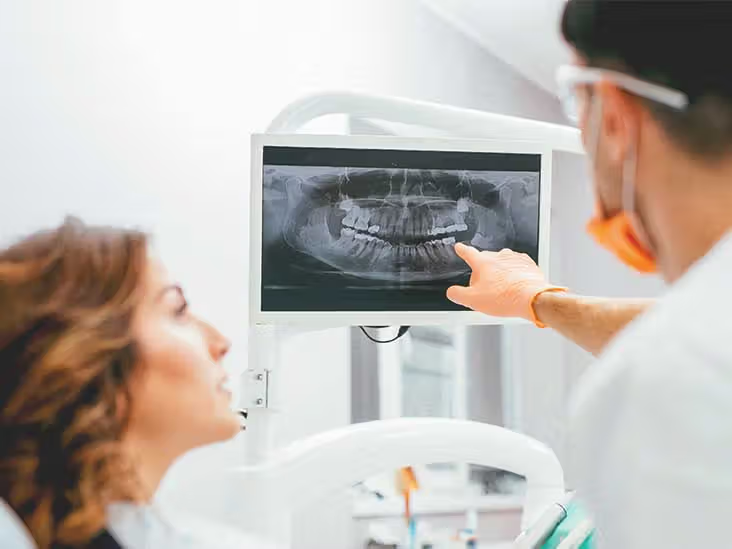Many people view dental x-rays as something optional—something only necessary when there’s a visible issue or pain. However, these imaging tools play a crucial role in detecting dental problems early, often before they become noticeable or cause discomfort. For families aiming to maintain optimal oral health, understanding the value of regular dental x-rays is key.

Although they are quick and non-invasive, x-rays provide a deep look beneath the surface of your smile. They reveal details about bone structure, tooth development, decay, and more—information that even the most experienced dentist can’t see with a visual exam alone.
Let’s break down the essential facts through a series of frequently asked questions to better understand how dental x-rays benefit patients of all ages and contribute to long-term oral wellness.
What Exactly Are Dental X-Rays?
Dental x-rays are images of your teeth and jaw taken using low levels of radiation. They help dentists see parts of the mouth that aren’t visible during a standard examination—such as the roots, jawbone, and spaces between teeth.
These x-rays are divided into several types, including:
- Bitewing X-rays: Show upper and lower teeth in one area.
- Periapical X-rays: Focus on one or two teeth to see the entire tooth and root.
- Panoramic X-rays: Offer a broad view of the jaw, teeth, sinuses, and TMJ.
- Occlusal X-rays: Capture the full arch of either the upper or lower teeth.
Each type is chosen based on the patient’s age, dental history, and specific concerns.
Why Are X-Rays Necessary for Preventive Dental Care?
X-rays are one of the most valuable tools in preventive dentistry. They help identify:
- Small cavities between teeth
- Bone loss linked to gum disease
- Infections at the tooth root
- Development issues in children’s teeth
- Impacted wisdom teeth or crowded growth
Without x-rays, many of these issues could go undetected until they become painful or more difficult to treat. For families looking to maintain consistent oral health, especially across different age groups, routine imaging allows for early intervention and more conservative treatment.
How Often Should You Get Dental X-Rays?
There’s no universal rule—it depends on each patient’s oral health, age, risk factors, and dental history. However, some general guidelines include:
- Children and Teens: Every 6–12 months, especially when teeth are developing.
- Adults with Good Oral Health: Every 1–2 years.
- Patients with Ongoing Issues: More frequent x-rays may be recommended.
A trusted provider, such as Cloverdale Dental Centre, can help families determine the right schedule based on evolving needs without unnecessary exposure.
Are Dental X-Rays Safe?
Yes. Dental x-rays use minimal radiation, especially with modern digital imaging systems. The amount of radiation exposure is comparable to that of a short flight or spending time in the sun. Dentists also use protective lead aprons and thyroid collars for added safety, particularly for younger or pregnant patients.
It’s worth noting that the risk of not detecting a problem early often outweighs the minimal exposure from x-rays. Early identification can prevent the need for more extensive treatments down the line.
Do Kids Really Need X-Rays?
Absolutely. Children’s mouths grow and change rapidly, and x-rays help monitor that development. They can:
- Confirm if all adult teeth are developing properly
- Spot missing or extra teeth
- Detect early decay in hard-to-see areas
- Identify issues with bite or jaw alignment
Regular imaging during the growing years helps prevent complications as children transition into adolescence and adulthood.
Can X-Rays Help With Orthodontic Planning?
Yes, and they’re often essential. Panoramic or cephalometric x-rays are commonly used to plan orthodontic treatments. These images provide a clear picture of how teeth are aligned and how they will shift with appliances like braces or aligners.
Orthodontists also use x-rays to assess jaw development, track wisdom teeth, and anticipate crowding issues—making it easier to craft tailored treatment plans.
What Are the Signs That an X-Ray Might Be Needed Outside a Routine Visit?
While many x-rays are scheduled proactively, some situations may prompt an unscheduled image. These include:
- Persistent tooth pain or sensitivity
- Swelling in the jaw or gums
- Unexplained bad breath or taste
- Trauma to the face or mouth
- Visible dark spots on teeth
If any of these occur, it’s important to seek dental evaluation promptly. An x-ray can quickly identify the underlying issue.
Are There Alternatives to Traditional X-Rays?
Today’s dental practices often use digital x-rays, which offer faster results and lower radiation levels than film-based options. Some providers also use 3D imaging or cone-beam CT scans for more complex cases, such as implant planning or advanced orthodontics.
These innovations help dentists provide more precise diagnoses and develop better treatment plans—making the patient experience smoother and more effective.
How Can Families Prepare for Dental X-Rays?
There’s no special preparation needed, but here are a few simple tips:
- Brush your teeth beforehand to reduce bacteria in the mouth.
- Let your dentist know if you’re pregnant or think you might be.
- Bring any previous x-rays or dental records if seeing a new provider.
Parents can also reassure younger children by explaining that x-rays don’t hurt and only take a few seconds. Demonstrating calmness and positivity can greatly reduce a child’s anxiety about the process.
What Should You Ask Your Dentist About X-Rays?
Here are a few smart questions to bring up during your next visit:
- How often should I (or my child) get x-rays?
- What type of x-ray will you use, and why?
- Are you using digital imaging?
- How do you minimize radiation exposure?
- Can you show me what you’re seeing on the x-ray?
Open communication helps patients feel more informed and involved in their care, while also clarifying how imaging supports their long-term dental goals.
Final Thoughts
While they might not seem as significant as a filling or cleaning, regular dental x-rays are foundational to preventive oral health. They offer a window into areas of the mouth that can’t be seen with the naked eye, giving dentists the information they need to protect your family’s smiles for years to come.
A practice that understands this importance—like Cloverdale Dental—can guide you in maintaining a balanced and safe x-ray routine. By staying informed, asking questions, and understanding how imaging works, families can feel confident and proactive about their dental care.
The clearer the picture, the healthier the future. Regular dental x-rays help make that future possible—quietly and effectively, one image at a time.


